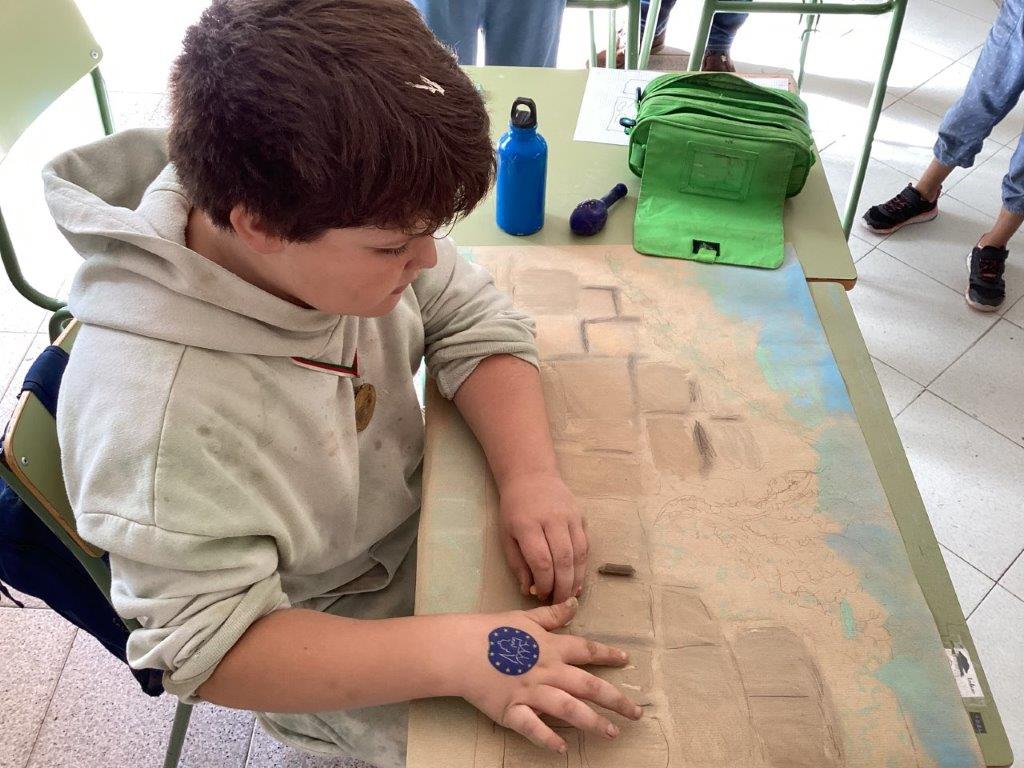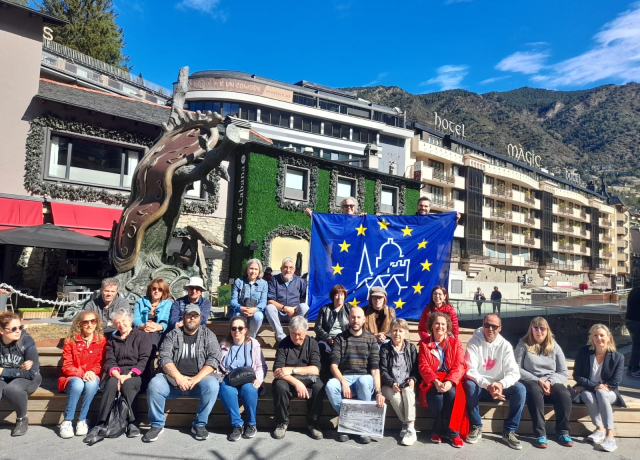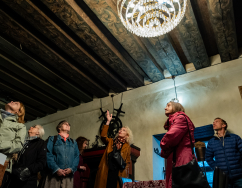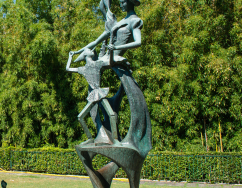European Heritage Days Article:
Finding Inspiration from Modern-Day Cultural Heritage Networks
European Heritage Days Article:
Finding Inspiration from Modern-Day Cultural Heritage Networks
Photo: Sant Vicenç d'Enclar - Patrimoni Cultural d'Andorra
From exchange programmes and youth networks to organisations and initiatives which link cultural sites internationally, there are groups working to connect both communities and historic places across Europe. Their efforts include educational activities, partnership projects, and demonstrating shared aspects of heritage.
This year’s "Routes, Networks and Connections" brochure lists a number of resources to help organisers research best practices, find inspiration and consider potential partnerships. This article looks at event ideas based on this, as well as providing an overview of some of the programmes and associations referenced which connect people and places across borders and encourage them to work together to appreciate both local and international cultural heritage.
Engaging younger audiences in cultural exchange
One of the audiences European Heritage Days is always keen to include is children and young people, and working with schools, universities and other networks with educational programmes such as museums and libraries is encouraged. Highlighting the impact of study and exchange programmes could be an interesting way to demonstrate this year’s theme by showcasing the stories of participating students and the cross-cultural connections they have formed. The "Routes, Networks and Connections" brochure also includes a list of relevant resources and organisations such as The European Youth Forum and Erasmus+ which work with young people. These groups provide a solid starting point for event programmes that offer young people opportunities to explore and share their heritage. Other event and project planning methods could include applying to the The European Youth Foundation which offers funding and educational support for qualifying projects. These projects may be pilot schemes, annual plans delivering year-round activities and those or international meetings involving young people from at least seven member states. European Heritage Days itself also runs an annual competition for Young European Heritage Makers to explore elements of their heritage. The overarching question – "What is your European heritage?" – encourages participants to contextualise their ideas within an international perspective, while a visit to Strasbourg for selected projects in the older age group also brings people together from the participating countries. Details about this year’s YEHM will be announced on our website later this year, and this will include details about how to plan and mentor activities starting in the autumn of 2024.

Linking international heritage sites through networks and themes
Many historic and cultural sites are connected across Europe and the world through networks, organisations, and associations which link them thematically or through their activities. One example of this is the award of a formal designation status which acknowledges the outstanding significance of a place to history, architecture or cultural values. Across Europe, there are hundreds of places which are linked by meeting the criteria of UNESCO’s World Heritage List such as cultural sites which represent human creative genius or bear exceptional testimony to a cultural tradition. Another international example is the European Heritage Label initiative, which has been run by the European Commission since 2013. This programme provides a unique status to sites which represent milestones in Europe’s history and which convey symbolic European values and ideals. There are currently 60 places on the list, including sites related to international diplomacy and human rights such as the Peace Palace in The Hague and the European District of Strasbourg, as well as others exploring themes which bring to life the narrative of Europe and its history such as the MMM museum about migration in Brussels and the Heart of Ancient Athens in Greece. Another resource which links cultural sites through a variety of themes across Europe is the Cultural Routes of the Council of Europe. These routes have created networks of organisations which together provide a journey through space and time to show how places across Europe are linked through topics including the arts such as architecture and music, journeys like pilgrimage ways and migration routes and many other cultural connections which have been formed throughout history. Routes, Networks and Connections provides the opportunity to harness networks like these to consider thematic connections, find venues and create partnerships to work together and explore the many avenues of this year’s theme.
Facilitating cross-cultural dialogue and connections
Organisers of European Heritage Days events are always encouraged to look for ways in which their programmes can promote meaningful cross-cultural dialogue. The "Routes, Networks and Connections" theme has a particular focus on creating opportunities for exploring how new connections and relationships can form. Event ideas to put this into practice include exchange visits of folk dancers or traditional music bands, working with trade unions to organise workshops discussing how the shared history of workers connects industrial heritage sites in different places, and inviting local history groups to create guided tours exploring the international stories of people who have lived, worked in or visited their town. Local overseas groups, associations and societies also have much experience with cross-cultural events and could be contacted for partnerships or to speak at events about how they facilitate and celebrate cultural exchange. One organisation mentioned in the Routes, Networks and Connections brochure which fosters trans-national relationships is the British Spanish Society which promotes friendship between the people of Spain and Britain through understanding of each other’s culture, language, institutions and history. Their scholarship system supports individual and institutional links between the UK and Spain, while a varied events programme has included Spanish wine tasting workshops, group visits to see the Ballet Nacional de España and book launches and readings for works written by Spanish authors. The Anglo-Danish Society is another example of a charity which aims to further relationships between two countries through a calendar of cultural and social events to support relations between the UK and Denmark. Reaching out to these kinds of organisations can help provide support and inspiration for creating an event programme which connects people across borders.
To see the full list of recommended resources as well as many other tips and event ideas, take a look at the "Routes, Networks and Connections" theme.


